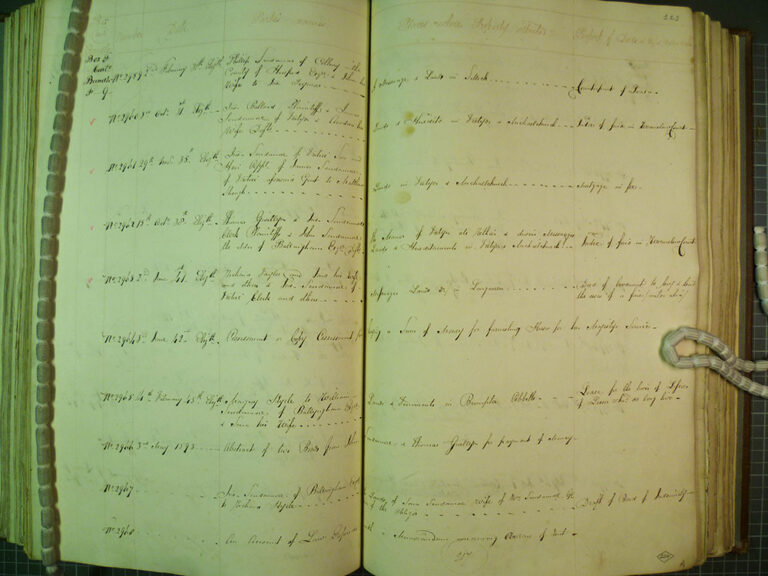Since August 2021, a team of dedicated volunteers has been helping The National Archives with a long-term project to improve our existing catalogue data for series C 115: The Duchess of Norfolk’s Deeds. The records in this series constitute the deeds, books, papers and writings of the Scudamore family of Holme Lacy and Ballingham in Herefordshire, which were inherited by the childless widow Frances Scudamore, Duchess of Norfolk, in 1815.
Taken together, the deeds, letters, accounts, manorial court rolls and other documents in series C 115 offer rich insights into the history of both the Scudamore family and rural Herefordshire and its environs in the medieval and early modern periods. At present, the catalogue descriptions for these records are basic, inadequate and lacking unique references. The C 115 project aims to fix these data problems, which currently present a barrier to access and meaningful research.
The Duchess of Norfolk suffered from poor mental health. When she inherited the Scudamore estate, she was deemed too unwell to manage her own financial affairs, and the estate thus came under the supervision of the Court of Chancery. In 1816, a Herefordshire solicitor named Thomas Bird was tasked with producing a schedule of the books and papers lately inherited by Frances Scudamore. His handwritten schedule still survives, and is preserved at The National Archives, under the reference IND 1/23396.
Bird’s descriptions are richer in detail than those currently in Discovery, the catalogue. As such, the C 115 project was born to capture the content of Bird’s manuscript record schedule into a master spreadsheet, creating new digital descriptions that will eventually overwrite their less detailed counterparts in Discovery. Bird’s record schedule is a hefty volume, containing descriptions of 8,969 deeds and other documents. Our remote volunteers have been working their way through this volume page by page, doing a wonderful job of transcribing Bird’s text into the spreadsheet with a column layout mirroring that of the handwritten schedule.

Thomas Bird’s handwriting, spelling and uses of abbreviation can be challenging from the transcriber’s point of view. Over the course of the project, our volunteers have got to grips with Bird’s idiosyncratic capital ‘R’, his use of the ‘ff’ form of capital F, and his abbreviations for the words ‘remainder’ (‘rem-’) and ‘consideration’ (‘conson’). Likewise, volunteers have come to know and recognise some of the archaic spellings used in the schedule for modern place names like Broad Oak (‘Brodock’), Condover (‘Cundor’), and The Verne (‘Ferne’).
The C 115 schedule project is progressing well. Through the efforts of our volunteers, data has now been captured for more than 3,100 of the 8,969 original documents described in Bird’s 19th-century record schedule. Once the schedule has been transcribed in its entirety, the project can move to phase 2, when gaps in the data will be addressed and the new, improved catalogue data, contributed by our talented and hard-working volunteers, will be published in Discovery.
Many thanks to our volunteers for all their work so far. The future of the C 115 project looks bright. By improving our catalogue descriptions for The Duchess of Norfolk’s Deeds, we are moving perceptibly closer to the goal of opening up these records for innovative and exciting research.
Emily Jennings is the C 115 volunteer project co-supervisor, in the Cataloguing, Taxonomy and Data department.